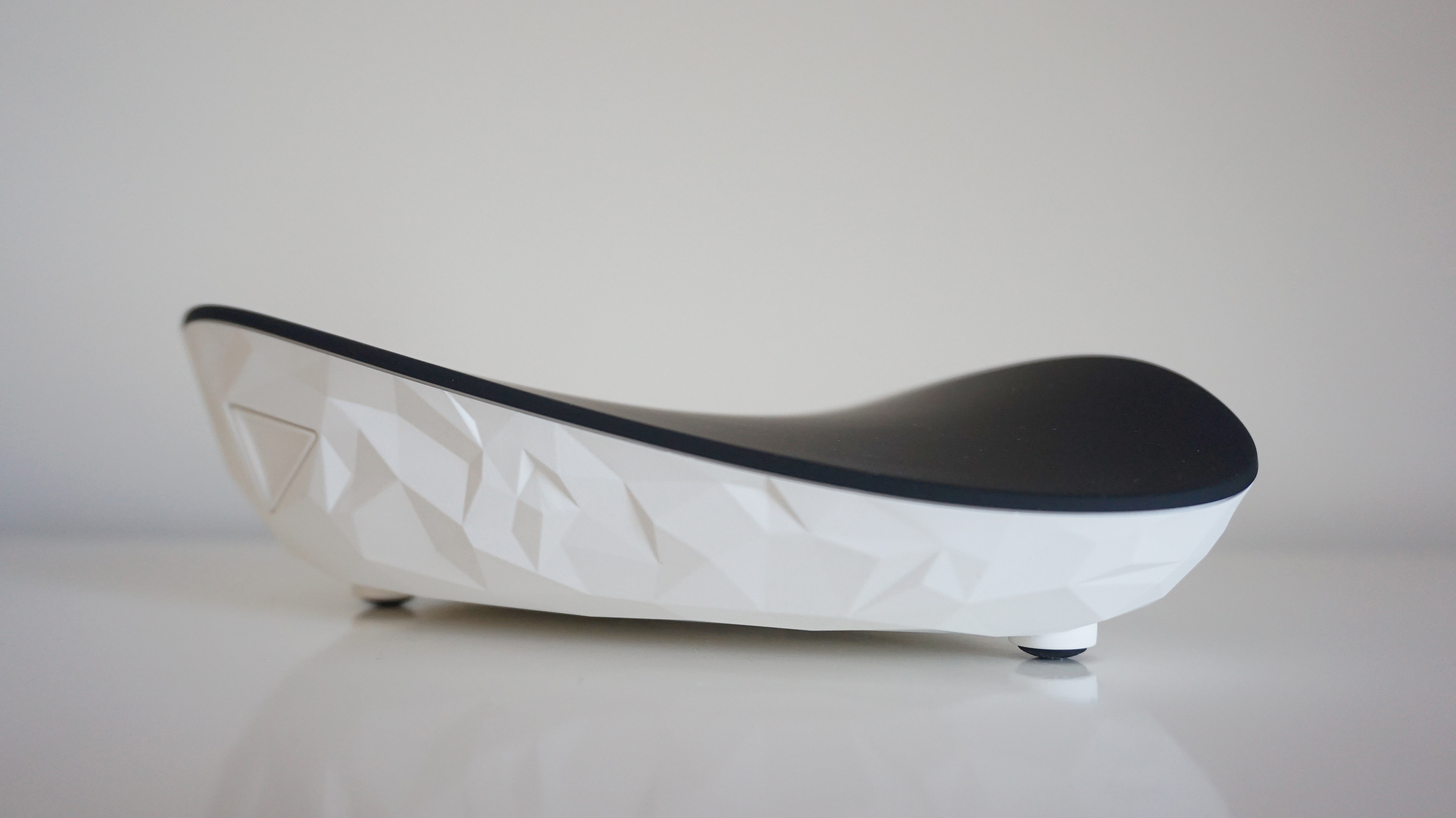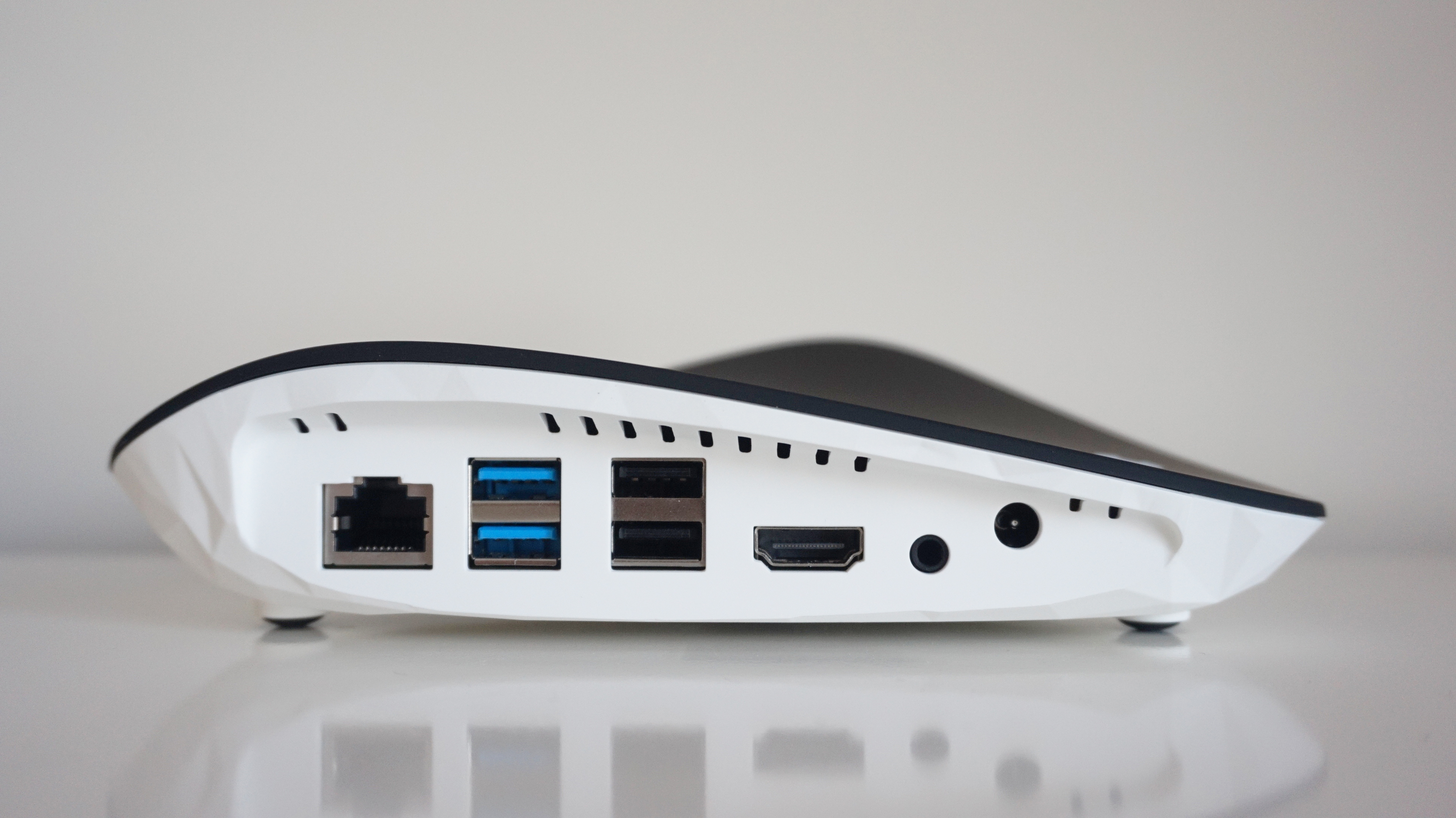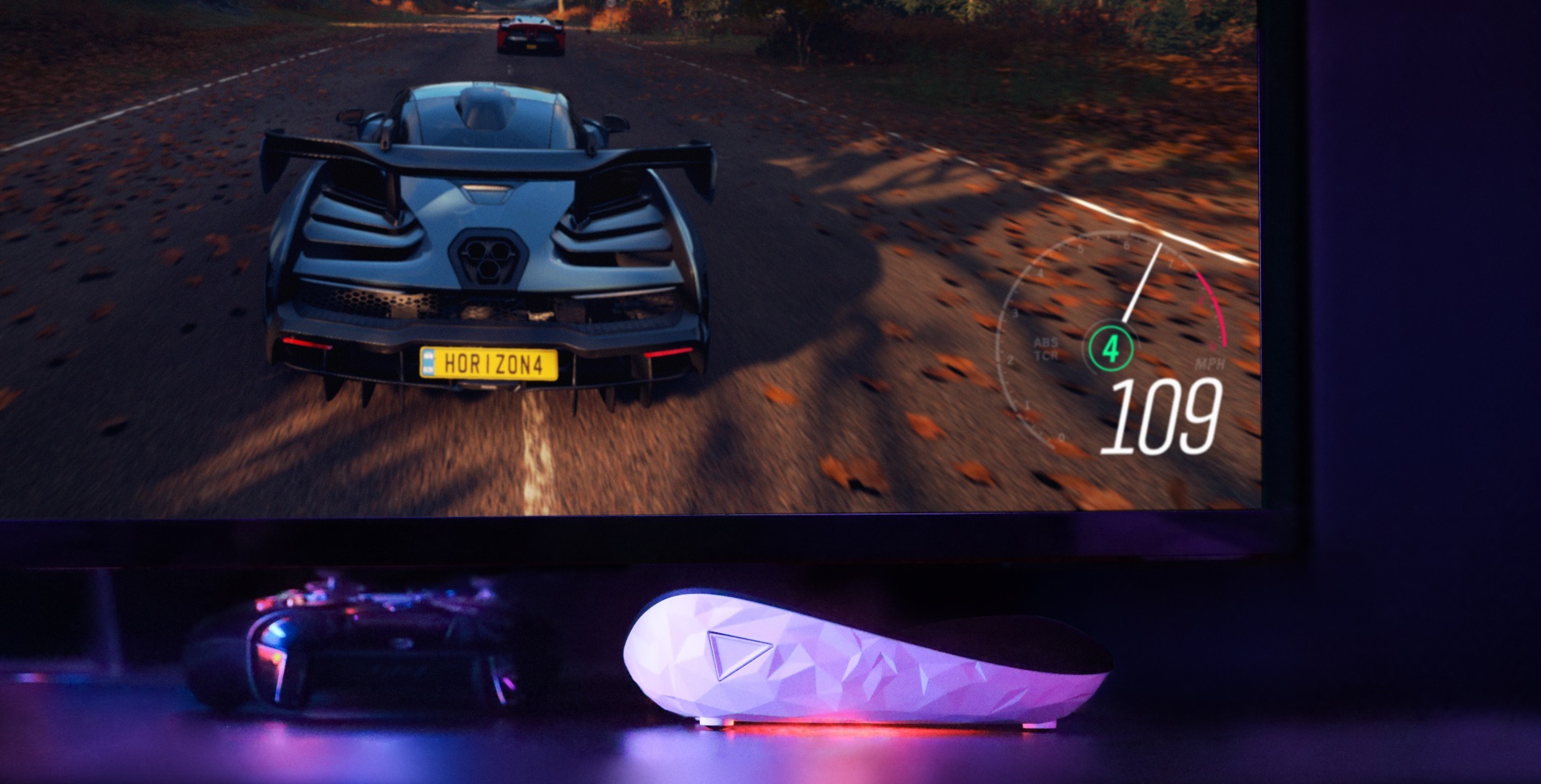
It’s been some time since I final checked out Shadow’s cloud PC service. Over a 12 months, actually. Since then, Shadow have grown fairly a bit, increasing their remit to the US and 5 different European international locations after initially beginning out in France, and as we speak marks the discharge of their brand-new cloud field for sticking beneath your TV or monitor, the Shadow Ghost (which is pictured up the highest there). Could this tiddly monochrome miniature of the London Aquatics Centre actually substitute your present gaming tower, although? Let’s discover out.
The tech behind Shadow is just about unchanged – you continue to get your personal devoted GTX 1080-powered cloud PC with an Intel Xeon CPU, 12GB of 2400MHz RAM and 256GB value of space for storing – as is the worth, which remains to be £26.95 / $34.95 monthly in case you join a 12 months’s subscription. The solely factor that’s actually totally different is that the Shadow Blade field, which is what I noticed final 12 months, has now been changed by the newly designed Ghost, which is able to set you again £110 / $120.
You don’t technically want one to make use of Shadow’s cloud PC service – it’s additionally accessible through an app for present PCs, Macs, Android and iOS gadgets – however if you wish to plug it right into a display, akin to a TV or monitor, for instance, so as to substitute an present PC, laptop computer or Mac, then you definitely’re going to wish a Ghost field.
I have to admit, the design is certainly simpler on the eyes than the Blade, which was all sharp black angles and had a really l33t gamer type of vibe to it, and it’ll most likely slot in loads higher with all the opposite fine details you could have beneath your TV in case you have been eager about plonking it in the lounge. I nonetheless suppose the Ghost’s obsession with wonky white knobbly bits is a bit excessive – in the event that they actually wished it to vanish and mix in with the remainder of your set-top containers they need to have given it a plain, easy end, in my eyes – however on the entire it’s definitely a lot much less of an eye-sore than both the Blade or one thing just like the Nvidia Shield, which additionally graduated from the identical college of edgy black triangles.
Just just like the outdated Blade, although, the Ghost is basically a glorified ports field, albeit with a wider number of connections this time. As properly as an HDMI 2.zero output for plugging it right into a 4K show, it’s additionally received two USB 3.zero ports and two USB2 ports on your peripherals akin to a mouse and keyboard, plus a Gigabit Ethernet port for a wired web connection and a 3.5mm audio in/out jack for a headset. It additionally helps Bluetooth 4.1, in addition to 802.11ac dual-band Wi-Fi.
But regardless of Shadow’s advertising push to promote the Ghost as the perfect front room resolution for high-powered PC gaming, the precise location of all these ports isn’t notably conducive to kicking again on the couch. There’s no front-facing USB port for a wired controller or lapboard, for instance, and whereas its little rubber toes do a fairly good job of maintaining its light-weight chassis in place when all of your cables are trailing out the again (such as you would have for a traditional monitor setup), it’s merely not heavy sufficient to remain put while you begin tugging these USB peripherals out in entrance of it.
Sure, you would most likely get round a part of that downside by utilizing a wi-fi controller over its Bluetooth connection, however lapboard followers and other people with outdated wired Xbox 360 controllers like myself are very a lot out of luck right here. It’s nonetheless completely practical as a front room cloud PC, in fact, offered you don’t thoughts placing up with some messy cabling, but it surely’s nonetheless received an extended technique to go earlier than it matches the easy comfort of a modern-day console field.
That’s roughly it for the Ghost itself. Otherwise, the service is similar throughout all gadgets. Now, I do know some folks don’t wish to hand over management of their PC to another person, and that lots of people take satisfaction in fine-tuning their rig and having it arrange simply so. That’s positive. Shadow isn’t for you.
But in case you’re somebody who breaks out in a chilly sweat on the very considered both making an attempt to build a PC or improve the one you’ve already received, then the concept of merely paying a subscription price to have a brilliant highly effective PC at your fingertips with out all the effort of swapping out elements each couple of years is definitely an interesting one.
After all, to get the type of equal spec Shadow are providing, you’re most likely spending round £1500 / $2000 in case you purchase a PC pre-made. Overclockers UK, as an example, do a pre-built PC with a Core i7-9700Okay, 16GB RAM, RTX 2070 and 256GB SSD for £1530 proper now, which is a good wad of money.
But let’s say you propose to make use of that PC for the subsequent 5 years. A Shadow subscription, in the meantime, will price you £27 / $35 monthly, which is £324 / $420 12 months. Times that by 5 (£1620 / $2100) and it’s not far off what you’d pay for a similarly-specced pre-built PC. It’s a few hundred smackers costlier, positive, however when Shadow care for all of the eventual upgrades as properly, I reckon that type of comfort might be value the additional expense.
At least in idea. The thought of a having a cloud PC like Shadow is sound. It’s zero faff for close to top of the range elements, and Shadow’s built-in excessive web speeds – as much as 1Gb/s obtain or 100Mb/s add – additionally take the effort out of ready for enormous games to obtain. Admittedly, I solely ever noticed a peak of round 100Mb/s once I tried downloading Final Fantasy XV, for instance, however I nonetheless accomplished the 77GB obtain in beneath an hour, which is a heck of loads sooner than it might be on my regular dwelling web.
The downside is that, until you’ve received the absolutest bestest finest dwelling web, I don’t suppose the top result’s fairly there but in comparison with what you get with a correct, bodily PC – no less than in relation to something extra demanding than streaming games at 1920×1080. I imply, I’ve received a fairly first rate web package deal with obtain speeds of round 25Mbps in line with Speedtest, and Shadow themselves suggest you could have a fibre or cable connection (test) that may deal with Shadow’s common bandwidth requirement of 5-25Mbps (double test).
But when the Ghost’s essential promoting level is ‘Hey, hook me up to your 4K TV and play games at 60fps’, I actually struggled to get an honest expertise at this decision. Setting it up wasn’t an issue. Once I’d chosen my keyboard structure, linked to my dwelling Wi-Fi community, logged in to my Shadow account and waited for it to complete downloading its varied updates for the field, I used to be capable of launch Shadow’s streaming service with out situation. From there, it was similar to I used to be organising a daily Windows 10 PC for the primary time.
And when you land on the desktop, you possibly can just about do something on Shadow that you simply’d do on an atypical PC – obtain Steam and play any game out of your present library; set up your internet browser of alternative; edit images; watch movies. You title it. There’s none of this ‘you can only play this select number of games’ malarkey like Nvidia’s GeForce Now service. It’s similar to having a daily PC, albeit one which’s sitting in an information centre someplace as a substitute of blowing a gasket beneath your desk or subsequent to your TV.
For me, nonetheless, there was a noticeable lag once I had it set to 4K. From easy mouse actions throughout the display to shunting home windows across the desktop, it felt like I used to be in possession of an historic Pentium PC that was struggling to even comprehend primary desktop duties, not a server-grade Xeon – which isn’t actually what you need in case you’re considering of utilizing it to exchange your present PC. It might also have one thing to do with the truth that the UK’s Shadow knowledge centre is positioned someplace in Paris, which might not be the case for different international locations or US cities the place the info centre’s a lot nearer, however nonetheless, it doesn’t precisely make an awesome first impression.
That mentioned, Shadow’s desktop lag wasn’t almost as prevalent when enjoying games. When I booted up Final Fantasy XV, Shadow of the Tomb Raider and Monster Hunter: World, for instance, it felt completely responsive enjoying on mouse and keyboard at 4K, and I used to be capable of management the digital camera and battle large monsters with no downside in anyway. Indeed, from a lag perspective, I’d be hard-pushed to say if it was any totally different to enjoying it on my common PC.
There was, nonetheless, a sure fuzziness that I couldn’t fairly shake. Again, a big a part of that is most likely all the way down to the standard of my very own web connection, however on my 4K TV it seemed like I used to be truly enjoying one thing at 1920×1080 upscaled to 4K, and every part from the world at giant to the menu UI simply seemed a bit hazy spherical the perimeters. It’s not like fast-paced tussles or fast digital camera pans ever descended right into a blocky, incomprehensible mess. Far from it. But in case you’re going to have a passable expertise at 4K, then you definitely’re going to wish a lot better web than I do.
Indeed, decreasing the in-game decision to one thing like 2560×1440 or 1920×1080 simply seemed even worse on my 4K TV, as every part seemed even fuzzier than it did earlier than. I do know it’s not my TV doing a nasty job at upscaling, both, as I performed the whole lot of Shadow of the Tomb Raider on that TV at 2560×1440 utilizing my GTX 1070 Ti-based PC, and that seemed infinitely sharper than what I used to be seeing by Shadow.
When I attempted connecting my Ghost to a 1920×1080 show, nonetheless, every part seemed exponentially higher. Those fuzzy edges had vanished, character fashions and background surroundings have been a lot, a lot sharper, and it was typically a a lot smoother expertise – virtually as if I used to be, actually, enjoying it on a correct PC. I didn’t expertise any lag on the desktop, both, and that is one thing I’d positively be completely satisfied to pay a subscription price for.
As a outcome, this solely reinforces what I mentioned earlier about Shadow nonetheless being finest fitted to conventional, desktop-based cloud gaming versus sticking it down in your front room. If you’ve received bonkers web then you might properly get together with it a lot better than I did on a 4K TV, however for everybody else, I believe you’ll be a lot better off pairing Shadow with a 1080p show. There’s definitely loads to love right here, notably you want the concept of by no means having to improve your PC ever once more, however in case you’re into gaming at 2560×1440 or 4K resolutions, you’re nonetheless higher off sticking with a correct PC in the meanwhile.






